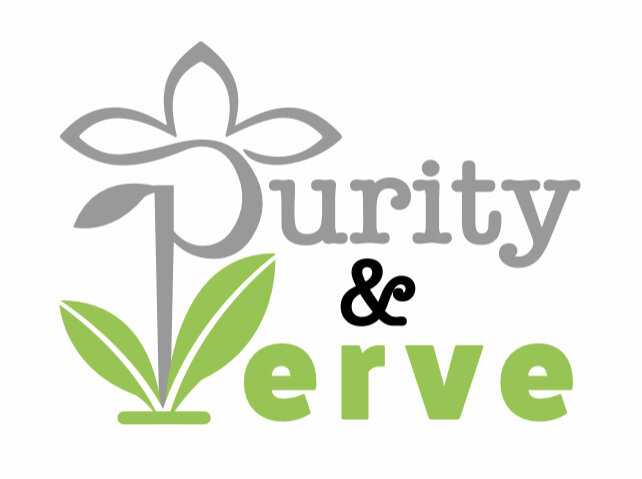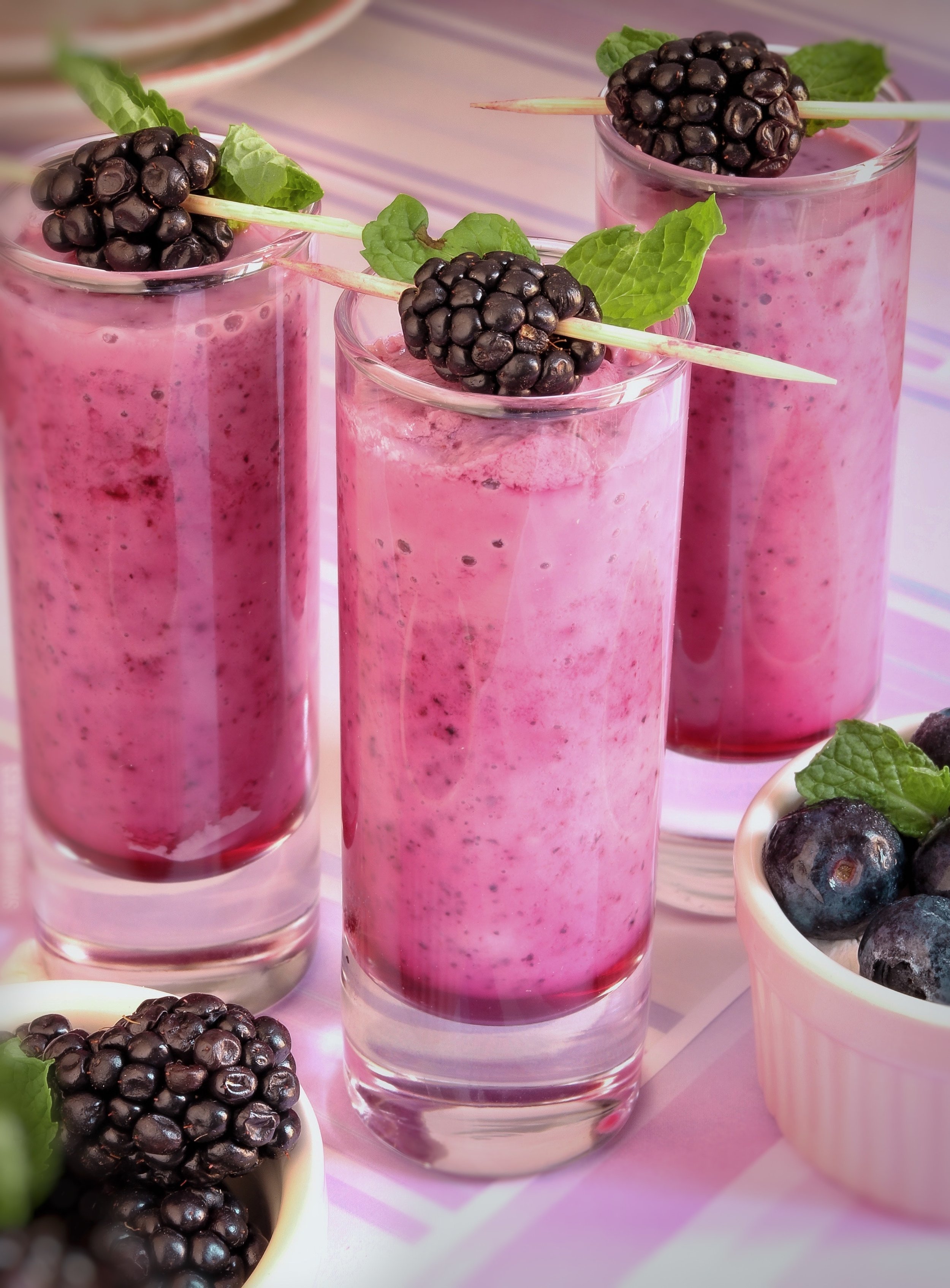A Compendium of My Juicing Disasters
by Cy
PurityandVerve.com
As part of my spring cleaning, I’m undertaking a juice cleanse. It’s one of my rituals and a way for me to welcome the warm weather I love. Juicing has inspired me to reflect upon my detoxification journey, which, though misguided at times, began 20 years ago.
My first juice cleanse was a DISASTER! Let me tell you! But I have a stronger practice today because of many early missteps. Here I will share the juicing mistakes I have made over the years. Some are things we all have to go through. They propel us towards betterment and are a beloved part of the process. Others should be avoided. This can be accomplished with research and preparation.
First Forays into Juicing
I underwent my first “juice cleanse” when I was 14 years old. I was part of a church youth group and we did an annual fundraiser where we agreed to fast overnight. Some of the adults in the community would donate money for every hour we fasted. We drank water and 100% juice and broke our fast the next day with a big meal. While I don’t consider drinking Juicy Juice and following it up with things like pretzels and hot dogs an actual fast, it did instill in me some positive feelings around foregoing solid food. I was never hungry and we had a great time staying up late playing games, watching movies and experiencing community.
Drinking Pasteurized Juice
I did my first “real” juice cleanse, not compelled by outside forces, when I was in my early 20s. I don’t remember how long I intended to fast. What I know now is that back then I didn’t know anything about juicing. I remember going to Trader Joe’s and Von’s and getting anything I could find that was labeled 100% juice. I bought several juices in cans and boxes and drank them. I never felt so crazy in my life. Pasteurized, concentrated juice products are not the equivalent of fresh-squeezed, natural juice and weren’t enough to sustain me. I gave up a few days in.
Takeaway: Through this ordeal, I learned never to use pasteurized juice of any kind during a juice cleanse, or in life in general, if possible. Pure juice is living, hydrating, detoxifying and filled with electrical energy. Pasteurized juices are abstracted byproducts that do not offer these benefits.
2. The Master Cleanse
Many people have come across a skinny yellow book called The Master Cleanse by Stanley Burroughs, which recommends using maple syrup, lemons and cayenne pepper along with laxatives to detox. The text gave me the impression that I’d be able to do this cleanse and have energy, run marathons and move mountains. My issue with this program isn’t so much what’s being taken in, but that it recommends using the stimulant laxative senna which can ruin bowel function.
In addition, to sustain ourselves on maple syrup, cayenne pepper and lemon water is a big ask. Maple syrup isn’t a raw food and cayenne pepper can irritate the intestinal tract. Lemons are incredible cleansers but can be harsh for an inexperienced faster.
Takeaway: Stay away from stimulant laxatives, non-raw foods whenever possible and and cayenne pepper. Cleansing shouldn’t make you feel like you’re going to die. If it does, something needs to change. Try regular juicing instead.
3. Juicing for a Set Number of Days Instead of Intuitively
I used to think the more days I juiced, the more of a hardcore raw vegan I would be. I wasn’t comparing myself to others so much as being competitive with myself. Juicing is not a competition. It takes a greater level of self awareness to cleanse intuitively and not necessarily for a particular amount of days.
Setting goals is okay, but it’s a skill to know when to push forward and when to back off. There are times when each one of these is important. Balancing this is a skill that comes from within and with time.
Takeaway: Set juicing goals but stay in tune with yourself and adjust when necessary.
4. High-Pressure Pasteurized Juice
I once did an entire juice cleanse using high pressure pasteurized (HPP) juice without knowing it! I thought I was lucky to have a “fresh” juice bar within walking distance to help support my cleanse. The juice seemed to taste okay, but the expiration dates in the bottles seemed far out for fresh juice.
Several months after this cleanse, I had been reading about HPP juice. I was back at the juice bar and asked one of the workers about whether or not their juice was HPP. It turned out it was.
High pressure pasteurization is the use of pressure as opposed to high heat to sterilize juice. It’s intention is to control for harmful bacteria and some companies even promote HPP as a safer way of drinking juice. But something is lost when juices are processed and their shelf lives are extended. What they call harmful bacteria are likely helpful microorganisms and enzymes that our body can appreciate.
In addition, a lot of HPP juice is sold at the same price as fresh juice which is an incredible markup considering the the value of a nutrient-stripped product.
Takeaway: Pure, fresh squeezed, raw juice comes with a label warning about its raw state and has an expiration date no more than a few days out. Don’t get ripped off nutritionally or financially. Avoid HPP juice. If you’re unsure, ask.
5. Using Senna and other Harsh Laxatives
Making sure that the bowels are moving during a cleanse is important. But this isn’t accomplished through the use of senna or other harsh laxatives, synthetic or natural. These ultimately lead to bowel stagnation which must be avoided.
I now use gentle enemas and non-stimulant bowel formulas which include soothing herbs. My digestion is now stronger at the end of a cleanse.
Takeaway: Don’t stimulate the bowel with strong chemical or herbal laxatives. Keep the bowel healthy through correct eating, gentle herbs and enemas.
6. Mixing Fruit and Vegetables
I didn’t learn until a few years ago that fruits and vegetables have distinct properties, electrical energies and digestive times. It’s okay to cut the savory or bitter flavor of vegetables with a green apple or to mix fruits or vegetables with veggie fruits (non-sweet fruits like cucumber and tomato). But the fruit and vegetable blends that are so popular (i.e. carrot orange, beet apple ginger, etc.) slow down the detoxification process and burden the system with having to sort out different foods.
Takeaway: Separate fruit and vegetable juice. See Dr. Morse’s Food Combining Chart to learn more.
7. Thinking I Needed to Drink Vegetable Juice
There is a branch of raw foodism that fears fruit. It teaches that you must focus on vegetables, greens, nuts and seeds. When I’m curious about something I test it on myself. I attempted low-fruit raw foodism for a few weeks and learned very quickly how important fruits are to our existence. We are frugivores by design which means the majority of what we take in should be fruit.
Some people have a more savory palette and enjoy green drinks. While I’ve had a green drink or two that I liked, most are a struggle for me. They make juicing feel like torture. Worse than that, I thought I was doing something wrong by drinking fruit juice. Now I know fruit juice is the best for detoxification.
Takeaway: A juice cleanse should be focused on fruit.
8. Thinking I Needed to Drink a Lot of Water
Water is wonderful if you desire it but thinking you need to drink large amounts of water in addition to fresh-pressed juice is incorrect. If you are juice cleansing or a high fruit eater, you don’t need the generally recommended 8 glasses of water. Fruit will provide superior hydration on a cellular level.
Takeaway: Drink water if you like it but don’t feel obligated.
9. Following External Guidelines for How Much Juice to Drink
Everyone is different when it comes to size, shape, energy and other qualities. We are all unique expressions of the divine. So why should our juicing practices be standardized? Some juice bars sell 6 packs of 12 oz juices or something comparable as a recommended daily juice intake. There are days when I will drink something close to this amount, days when I’ll want more and, more commonly, days when I won’t want to drink this much, especially as I get further into my cleanse.
I prefer a more intuitive approach. It’s okay to estimate how much juice is needed based on previous intake. I also find it helpful to leave room for how much and what kind of juice I want. This approach aligns more with what I need in the present.
Takeaway: Juice how you like and don’t let anyone tell you how much juice or what kind of juice to drink. Keep in mind fruits will detoxify more and vegetables can be useful to slow things down if you’re experiencing a healing crisis.
10. Transitioning Improperly
A major mistake I’ve made is not properly transitioning on and off of a juice cleanse. This is an incorrect practice that causes unnecessary stress. Transitioning correctly is essential. Some give the guideline that we should spend as much time transitioning on and off as we spend juice cleaning. I think this is a healthy tip. I also find a week of tapering down from solids, making sure I’m eating a very high or complete diet of fruit and beginning to phase in liquids is a good starting point.
I drink juice regularly so it’s not a huge change from my normal pattern. Coming off of a cleanse, stay in tune with the body. There will be no desire for anything heavy. You’ll most likely want and crave juice and continue to juice for several days. Follow your intuition.
Takeaway: Always transition onto and off of a juice cleanse.
Conclusion
Juicing can benefit everyone. But it’s important to prepare ourselves. We will still make mistakes and realize certain things don’t work for us. This trial and error process is a wonderful learning opportunity. I have learned so much over the years and become a better juicer because of it.



